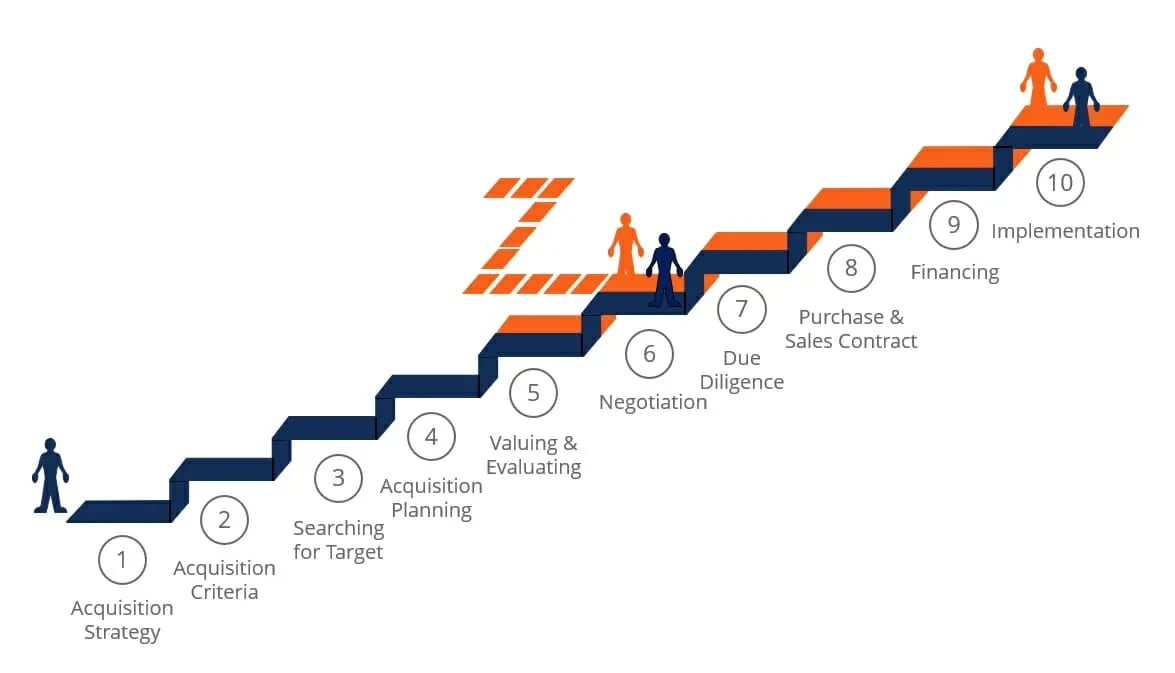Global JV - M&A Advisory
Powering Deals. Fueling Growth Through Strategic Alliances
Collaborations & Joint-Ventures


Advantage
Partnering or forming a Joint Venture (JV) with industry leaders offers numerous strategic advantages. Here are the key benefits
🔹 1. Share resources and reduce cost.
Business collaboration enables companies to achieve economies of scale by sharing resources like manufacturing, distribution, and infrastructure—reducing operating costs and offering competitive pricing.
🔹 2. Financial Stability.
Enjoy greater financial stability through shared capital, reduced exposure to losses, and access to well-established financial management systems—ensuring predictable returns, long-term viability, and confidence in future growth
🔹 3. Enhanced Credibility and Brand Strength
Market Trust: Association with a well-established brand builds customer and investor confidence.
Faster Market Acceptance: Easier entry into new markets where the partner has a strong presence.
🔹 4. Shared Risks and Costs
Risk Mitigation: Spread financial and operational risks.
Cost Sharing: Share R&D, marketing, production, or infrastructure costs.
🔹 5. Market Expansion and Reach
New Markets: Access regions, sectors, or customer bases you couldn’t reach alone.
Established Distribution Networks: Use partner’s supply chains, sales teams, and channels.
🔹 6. Accelerated Time-to-Market
Speed: Reduce time to develop, launch, and scale products/services.
Streamlined Processes: Leverage the partner's operational efficiency.
🔹 7. Improved Competitive Position
Stronger Offerings: Combine capabilities to offer more comprehensive or competitive solutions.
Barrier to Entry: Make it harder for competitors to enter or grow in the same space.
🔹 8. Learning and Innovation Opportunities
Cross-Pollination: Learn from partner’s culture, systems, and strategies.
Co-Development: Joint innovation can lead to new IP and products.
🔹 9. Regulatory and Local Market Support
Ease of Compliance: Industry leaders often have in-house legal/regulatory teams.
Government Relations: Benefit from their established local relationships and lobbying power.
🔹 10. Access to Expertise and Resources
Industry Know-How: Gain specialized knowledge, experience, and best practices.
Technology & Innovation: Leverage cutting-edge technologies or proprietary tools.
Skilled Talent: Tap into a highly trained and experienced workforce.
🔹 11. International Recognition
Strengthen your global standing by aligning with a globally recognized industry leader—enhancing investor confidence, customer trust, and cross-border growth opportunities.
🔹 12. Stronger Influence with Global Regulators
In the event of regulatory challenges or unforeseen issues, multinational corporations (MNCs) have deeper relationships and more influence at the doors of global regulators—offering an extra layer of protection, faster resolution, and reputational support.
Healthy business collaboration happens when Friscohn helps to two or more companies pool resources, exchange ideas, and work efficiently toward a shared goal.Write your text here...
Global M&A for Pharmaceuticals
1. Strategic Planning & Target Identification
Define strategic goals (e.g., pipeline expansion, geographic reach, manufacturing capacity)
Identify targets with complementary drug portfolios, technology platforms, or market presence
Consider regulatory environments and intellectual property (IP) landscapes
2. Preliminary Screening & Engagement
Conduct high-level evaluation of targets’ R&D pipeline, patent portfolio, and market positioning
Initiate confidential discussions with target companies under NDAs
Align on potential synergies in research, development, and commercialization
3. Comprehensive Due Diligence
Review clinical trial data, regulatory approvals, and compliance history
Assess intellectual property rights, patents, and licensing agreements
Analyze manufacturing capabilities, supply chain robustness, and quality systems
Evaluate financial health including R&D expenses, revenue streams, and cost structures
Conduct environmental and safety compliance audits
4. Valuation & Deal Structuring
Use pharma-specific valuation methods considering pipeline potential and patent lifecycles
Structure deals mindful of contingent payments like milestone or royalty agreements
Factor in regulatory hurdles and approval timelines affecting deal terms
5. Regulatory Approvals & Negotiation
Secure approvals from health authorities and competition regulators (FDA, EMA, FTC, etc.)
Negotiate detailed terms including representations on IP, regulatory risks, and product liabilities
Draft agreements covering complex licensing, royalty, and milestone clauses
6. Financing & Closing
Finalize financing through specialized pharma funds, strategic partners, or conventional lenders
Close transaction with full compliance to cross-border pharma regulations
Transfer assets, including patents, drug registrations, and manufacturing licenses
7. Post-Merger Integration (PMI)
Integrate R&D teams, harmonize clinical development pipelines, and align regulatory affairs
Consolidate manufacturing operations ensuring GMP compliance
Manage cultural integration between scientific teams and corporate functions
Monitor synergy realization focusing on innovation speed and market launch timelines




Global M&A Detailing
Summary
M&A transactions can be divided by type (horizontal, vertical, conglomerate) or by form (statutory, subsidiary, consolidation).
Valuation is a significant part of M&A and is a major point of discussion between the acquirer and the target.
Mergers and Acquisitions (M&A) Transactions – Types
1. Horizontal
A horizontal merger happens between two companies that operate in similar industries that may or may not be direct competitors.
2. Vertical
A vertical merger takes place between a company and its supplier or a customer along its supply chain. The company aims to move up or down along its supply chain, thus consolidating its position in the industry.
3. Conglomerate
This type of transaction is usually done for diversification reasons and is between companies in unrelated industries.
Mergers and Acquisitions (M&A) – Forms of Integration
1. Statutory
Statutory mergers usually occur when the acquirer is much larger than the target and acquires the target’s assets and liabilities. After the deal, the target company ceases to exist as a separate entity.
2. Subsidiary
In a subsidiary merger, the target becomes a subsidiary of the acquirer but continues to maintain its business.
3. Consolidation
In a consolidation, both companies in the transaction cease to exist after the deal, and a completely new entity is formed.
Reasons for Mergers and Acquisitions (M&A) Activity
Mergers and acquisitions (M&A) can take place for various reasons, such as:
1. Unlocking synergies
The common rationale for mergers and acquisitions (M&A) is to create synergies in which the combined company is worth more than the two companies individually. Synergies can be due to cost reduction or higher revenues.
Cost synergies are created due to economies of scale, while revenue synergies are typically created by cross-selling, increasing market share, or higher prices. Of the two, cost synergies can be easily quantified and calculated.
2. Higher growth
Inorganic growth through mergers and acquisitions (M&A) is usually a faster way for a company to achieve higher revenues as compared to growing organically. A company can gain by acquiring or merging with a company with the latest capabilities without having to take the risk of developing the same internally.
3. Stronger market power
In a horizontal merger, the resulting entity will attain a higher market share and will gain the power to influence prices. Vertical mergers also lead to higher market power, as the company will be more in control of its supply chain, thus avoiding external shocks in supply.
4. Diversification
Companies that operate in cyclical industries feel the need to diversify their cash flows to avoid significant losses during a slowdown in their industry. Acquiring a target in a non-cyclical industry enables a company to diversify and reduce its market risk.
5. Tax benefits
Tax benefits are looked into where one company realizes significant taxable income while another incurs tax loss carryforwards. Acquiring the company with the tax losses enables the acquirer to use the tax losses to lower its tax liability. However, mergers are not usually done just to avoid taxes.
Forms of Acquisition
There are two basic forms of mergers and acquisitions (M&A):
1. Stock purchase
In a stock purchase, the acquirer pays the target firm’s shareholders cash and/or shares in exchange for shares of the target company. Here, the target’s shareholders receive compensation and not the target. There are certain aspects to be considered in a stock purchase:
The acquirer absorbs all the assets and liabilities of the target – even those that are not on the balance sheet.
To receive the compensation from the acquirer, the target’s shareholders must approve the transaction through a majority vote, which can be a long process.
Shareholders bear the tax liability as they receive the compensation directly.
2. Asset purchase
In an asset purchase, the acquirer purchases the target’s assets and pays the target directly. There are certain aspects to be considered in an asset purchase, such as:
Since the acquirer purchases only the assets, it will avoid assuming any of the target’s liabilities.
As the payment is made directly to the target, generally, no shareholder approval is required unless the assets are significant (e.g., greater than 50% of the company).
The compensation received is taxed at the corporate level as capital gains by the target.
3. Method of payment
There are two methods of payment – stock and cash. However, in many instances, M&A transactions use a combination of the two, which is called a mixed offering.
4. Stock
In a stock offering, the acquirer issues new shares that are paid to the target’s shareholders. The number of shares received is based on an exchange ratio, which is finalized in advance due to stock price fluctuations.
5. Cash
In a cash offer, the acquirer simply pays cash in return for the target’s shares.
Mergers and Acquisitions (M&A) – Valuation
In an M&A transaction, the valuation process is conducted by the acquirer, as well as the target. The acquirer will want to purchase the target at the lowest price, while the target will want the highest price.
Thus, valuation is an important part of mergers and acquisitions (M&A), as it guides the buyer and seller to reach the final transaction price. Below are three major valuation methods that are used to value the target:
Discounted cash flow (DCF) method: The target’s value is calculated based on its future cash flows.
Comparable company analysis: Relative valuation metrics for public companies are used to determine the value of the target.
Comparable transaction analysis: Valuation metrics for past comparable transactions in the industry are used to determine the value of the target.
Contact Us for M&A Inquiries
Closer to our Customers, Always
With you from Start-up to Scale
© 2025. All rights reserved.
